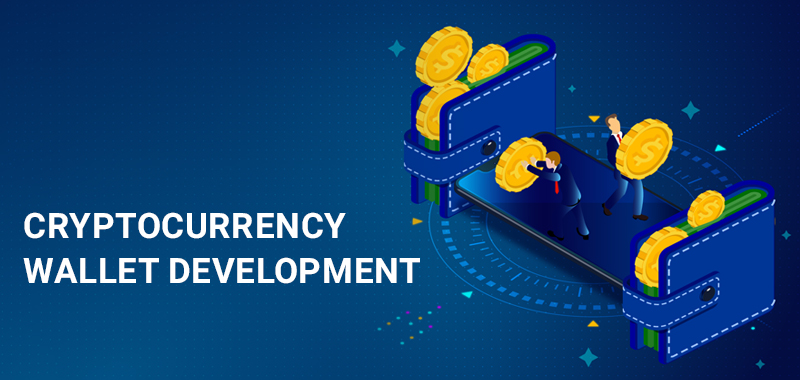Developing a crypto wallet may seem like a seamless process but it involves a lot of intricacies that many aren’t aware of. From choosing the right tech stack to ongoing maintenance, every step needs to be implemented perfectly. If you are also seeking guidance over crypto wallet development, this blog is for you!
In this blog, we’ll be discussing all the crucial steps for crypto wallet development. So, without further ado, let’s get started —
Key Features of a Crypto Wallet
Here are some of the key features that you must include in your crypto wallet –
Security
The most important feature of a crypto wallet is its security. Strong encryption, two-factor authentication (2FA), and private key storage are essential to protect users’ funds from hacking and unauthorized access. Some wallets even offer biometric authentication such as fingerprint or facial recognition for added security.
User-Friendly Interface
A simple and easy-to-use user interface (UI) enhances the user experience. Crypto wallets are used by people with varying technical backgrounds, so the quality of their design is key to widespread acceptance and ease of use.
Multi-Currency Support
Many crypto wallets offer support for multiple cryptocurrencies, allowing users to manage a variety of assets such as Bitcoin, Ethereum, and other altcoins from a single platform. This versatility makes it easier for users to store, send, and receive various forms of crypto.
Backup and Recovery Options
Backup and recovery features are essential if users lose access to their wallets. Most wallets provide a recovery keyword, which can be used to restore wallet access if the device is lost or damaged.
Integration with DeFi and NFTs
Modern crypto wallets are often combined with the Decentralized Finance (DeFi) protocol and support non-fungible tokens (NFTs). This allows users to access DeFi services such as bet farming, debt farming, and yield farming, as well as managing and trading NFTs, all from their own wallets.
Cross-Platform Availability
Multiple wallets are available across platforms—mobile, desktop, and web. This cross-platform integration ensures that users can access their assets from any device, making it simple and flexible.
Development Steps of a Crypto Wallet
Building a crypto wallet requires careful planning and execution to ensure security, functionality, and user experience. Below are the key development steps involved in creating a crypto wallet:
Planning and Research
The first step in crypto wallet development is thorough research and planning. Explain the purpose of the wallet (encrypted or unencrypted), the target audience, and the specific cryptocurrencies or tokens it will support. At this stage, it’s important to know what security features are needed and which blockchain platforms to integrate with. Competitor analysis can help you identify gaps and opportunities in the current market.
Choosing the Technology Stack
Choosing the right technology stack in crypto wallet development is critical to the success of your crypto wallet. The back of the wallet typically incorporates blockchain technology such as Ethereum, Bitcoin, or Binance Smart Chain. You’ll also need to decide on leading-edge technologies, such as React Native for cross-platform apps or Flutter for mobile development. Security libraries, API integration for cryptocurrency rates, and cloud services for storage and backup are also part of the tech stack choices.
Wallet Design and User Interface (UI/UX)
A well-designed user interface (UI) and intuitive experience (UX) are essential to the success of crypto wallets. The interface should be simple and intuitive, allowing users to quickly access features such as sending, receiving, and balancing. Mobile-responsive design is key, as many users prefer mobile wallets. Also, make sure that complex tasks like saving a seed story or starting a business are easy, with clear instructions for beginners.
Security Features Implementation
Security is paramount in crypto wallet development. Use strong encryption to protect user data, and ensure that a private key is properly stored, preferably on the user’s device rather than on a central server. New security measures include two-factor authentication (2FA), biometric login options, and the addition of cold storage options where users can store their crypto offline with higher security and more signature approvals to increase safety.
Blockchain Integration
Next, the wallet must be added to the desired blockchain networks. This links the wallet to the blockchain, allowing users to send and receive cryptocurrencies. Integration ensures secure and efficient communication by establishing API connectivity and writing smart contracts. Make sure the wallet can support multiple blockchain tokens if multi-currency functionality is required.
Testing and Quality Assurance
Once the crypto wallet development phase is over, extensive testing is required. Perform unit tests to check individual components and integration tests to ensure that the entire system works together smoothly. Security testing is crucial to identify vulnerabilities in encryption and transaction handling. Perform a load test to ensure the wallet can handle a high volume of transactions without crashing or slowing down. User testing can also help refine the UI/UX.
Deployment and Launch
After the product has been tested and optimized, the next step is implementation. You will need to publish the wallet to the relevant app stores (Google Play, Apple App Store) and verify that it complies with legal and security standards. Establish a cloud infrastructure to manage user data, backups, and server-side operations. For a web-based wallet, make sure the hosting environment is secure and scalable.
Ongoing Maintenance and Updates
Even after the wallet is launched, the crypto wallet development process doesn’t end. Regular updates are required to fix bugs, enhance security, and introduce new features. Monitoring wallet performance and addressing user feedback is essential to achieve high levels of satisfaction and ensure that wallets remain competitive in a rapidly growing market.
Cost-Affecting Factors in Crypto Wallet Development
- Type of Wallet: Fees vary depending on whether the wallet is encrypted, non-custodial, or has multiple signatures. Unsecured wallets typically require more complex security features, increasing development costs.
- Supported Cryptocurrencies: The more cryptocurrencies a wallet supports, the higher the development cost. Multichain integration requires additional resources.
- Security Features: Advanced security measures such as two-factor authentication (2FA), biometric authentication, and encryption protocols increase costs.
- UI/UX Design: A simple and user-friendly interface adds to the cost, especially if you want cross-platform compatibility (mobile, web, and desktop).
- API Integration: Interacting with blockchain APIs, value providers, or third-party services includes costs based on the number and complexity of APIs.
- Maintenance and Updates: Regular updates, security patches, and feature additions also affect the overall development budget.
Parting Words

There you have it, a complete guide on the whats and how’s of cryptocurrency wallet development. We certainly hope that this guide will help you gain a better understanding of the developing process of crypto wallets.
Remember, in order to implement all the steps properly, hiring a professional crypto wallet development company is crucial.
Connect with Coin Developer India today and get your crypto wallet developed with a team of experienced developers by your side. You’ll be all on your way to developing a successful crypto wallet!


